https://ebookgate.com/product/functional-calculusfor-sectorial-operators-1st-edition-markus-haase/
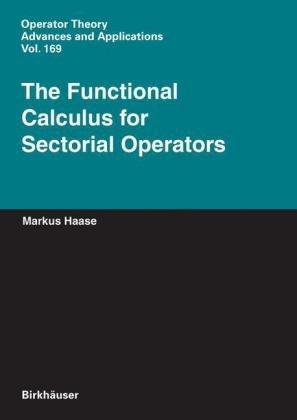
Download more ebook from https://ebookgate.com
More products digital (pdf, epub, mobi) instant download maybe you interests ...
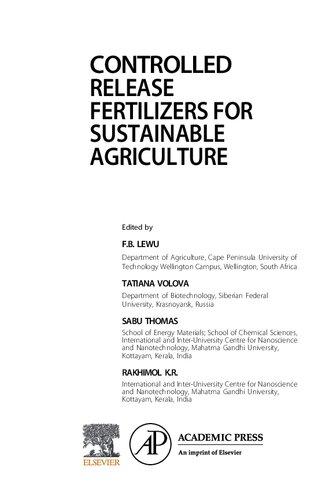
Controlled Release Fertilizers for Sustainable Agriculture 1st Edition Markus Raab
https://ebookgate.com/product/controlled-release-fertilizers-forsustainable-agriculture-1st-edition-markus-raab/
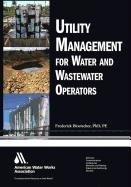
Utility Management for Water Wastewater Operators Fred Bloetscher
https://ebookgate.com/product/utility-management-for-waterwastewater-operators-fred-bloetscher/
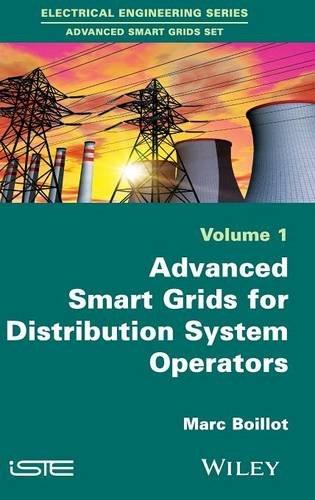
Advanced Smartgrids for Distribution System Operators 1st Edition Marc Boillot
https://ebookgate.com/product/advanced-smartgrids-fordistribution-system-operators-1st-edition-marc-boillot/
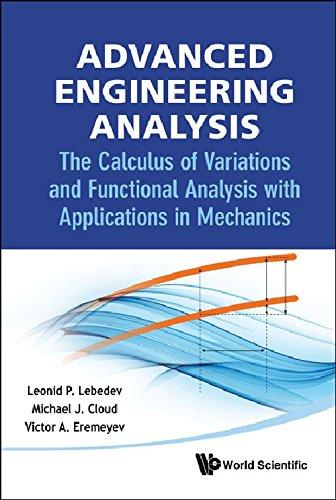
Advanced engineering analysis the calculus of variations and functional analysis with applications in mechanics 1st Edition Lebedev
https://ebookgate.com/product/advanced-engineering-analysis-thecalculus-of-variations-and-functional-analysis-with-applicationsin-mechanics-1st-edition-lebedev/
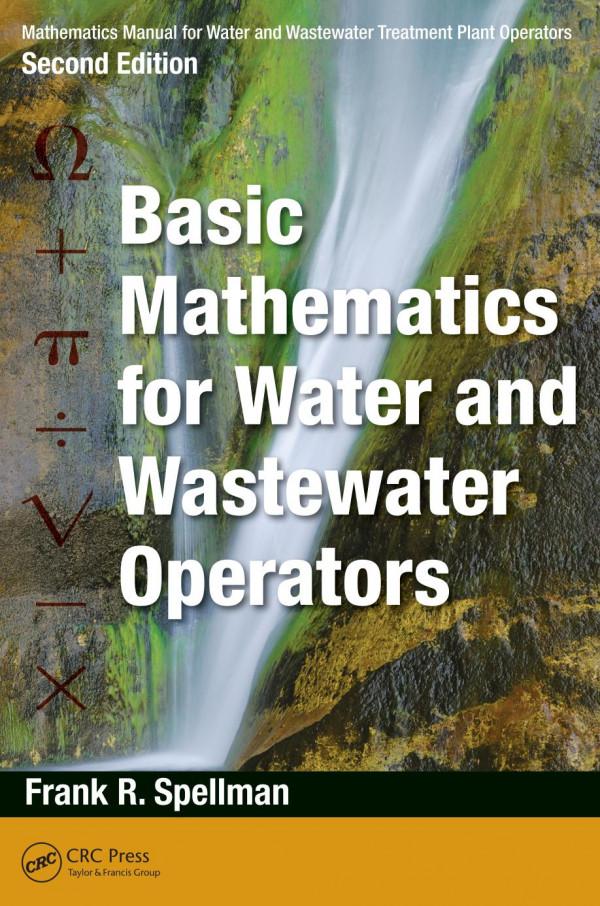
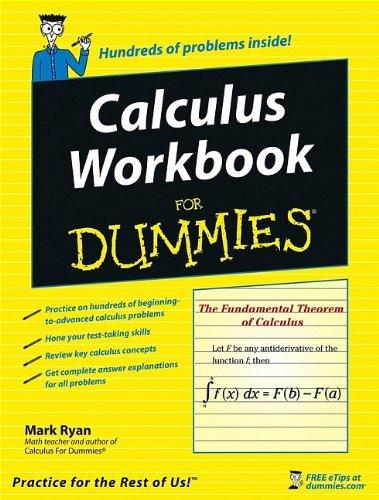

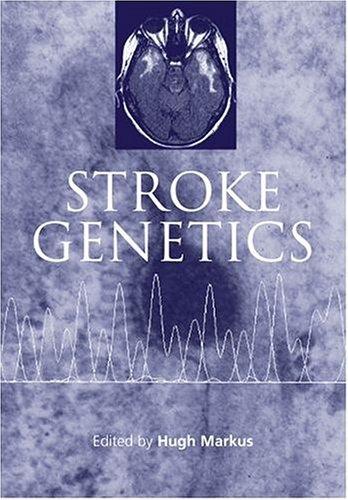
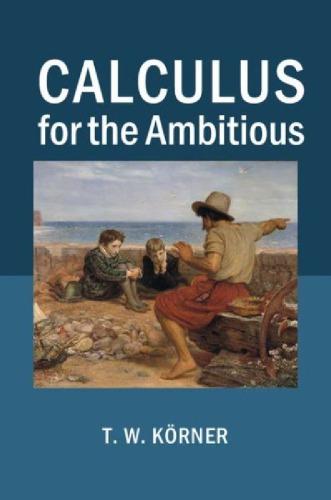
Mathematics Manual for Water and Wastewater Treatment
Plant Operators Basic Mathematics for Water and Wastewater Operators 2nd Edition Frank R. Spellman (Author)
https://ebookgate.com/product/mathematics-manual-for-water-andwastewater-treatment-plant-operators-basic-mathematics-for-waterand-wastewater-operators-2nd-edition-frank-r-spellman-author/
Calculus Workbook For Dummies 1st Edition Mark Ryan
https://ebookgate.com/product/calculus-workbook-for-dummies-1stedition-mark-ryan/
Wild Romanticism 1st Edition Markus Poetzsch
https://ebookgate.com/product/wild-romanticism-1st-editionmarkus-poetzsch/
Stroke Genetics 1st Edition Hugh Markus
https://ebookgate.com/product/stroke-genetics-1st-edition-hughmarkus/
Calculus for the Ambitious Körner T.W.
https://ebookgate.com/product/calculus-for-the-ambitious-kornert-w/
Prefacexi
1AxiomaticsforFunctionalCalculi1
1.1TheConceptofFunctionalCalculus.................1
1.2AnAbstractFramework........................3
1.2.1TheExtensionProcedure...................4
1.2.2PropertiesoftheExtendedCalculus.............5
1.2.3GeneratorsandMorphisms..................7
1.3MeromorphicFunctionalCalculi...................9
1.3.1RationalFunctions.......................10
1.3.2AnAbstractCompositionRule................12
1.4MultiplicationOperators........................13
1.5ConcludingRemarks..........................15 1.6Comments................................16
2TheFunctionalCalculusforSectorialOperators19
2.1SectorialOperators...........................19
2.1.1Examples............................24
2.1.2SectorialApproximation....................25
2.2SpacesofHolomorphicFunctions...................26
2.3TheNaturalFunctionalCalculus...................30
2.3.1PrimaryFunctionalCalculusviaCauchyIntegrals.....30
2.3.2TheNaturalFunctionalCalculus...............34
2.3.3FunctionsofPolynomialGrowth...............37
2.3.4InjectiveOperators.......................39
2.4TheCompositionRule.........................41
2.5ExtensionsAccordingtoSpectralConditions............45
2.5.1InvertibleOperators......................45
2.5.2BoundedOperators......................46
2.5.3BoundedandInvertibleOperators..............47
2.6Miscellanies...............................48
2.6.1Adjoints.............................48
2.6.2Restrictions...........................50
2.6.3SectorialApproximation....................50
2.6.4Boundedness..........................52
2.7TheSpectralMappingTheorem....................53
2.7.1TheSpectralInclusionTheorem...............53
2.7.2TheSpectralMappingTheorem...............55
2.8Comments................................57
3FractionalPowersandSemigroups61
3.1FractionalPowerswithPositiveRealPart..............61
3.2FractionalPowerswithArbitraryRealPart.............70
3.3ThePhillipsCalculusforSemigroupGenerators...........73
3.4HolomorphicSemigroups........................76
3.5TheLogarithmandtheImaginaryPowers..............81 3.6Comments................................88
4Strip-typeOperatorsandtheLogarithm91
4.1Strip-typeOperators..........................91
4.2TheNaturalFunctionalCalculus...................93
4.3TheSpectralHeightoftheLogarithm................98
4.4Monniaux’sTheoremandtheInversionProblem..........100
4.5ACounterexample...........................101
4.6Comments................................104
5TheBoundednessofthe H ∞ -calculus105
5.1ConvergenceLemma..........................105
5.1.1ConvergenceLemmaforSectorialOperators.........105
5.1.2ConvergenceLemmaforStrip-typeOperators........107
5.2AFundamentalApproximationTechnique..............108
5.3EquivalentDescriptionsandUniqueness...............111
5.3.1Subspaces............................112
5.3.2Adjoints.............................113
5.3.3Logarithms...........................113
5.3.4BoundednessonSubalgebrasof H ∞ .............114
5.3.5Uniqueness...........................116
5.4TheMinimalAngle...........................117
5.5PerturbationResults..........................119
5.5.1ResolventGrowthConditions.................119
5.5.2ATheoremofPr¨ussandSohr.................125
5.6ACharacterisation...........................127
5.7Comments................................127
6InterpolationSpaces131
6.1RealInterpolationSpaces.......................131
6.2Characterisations............................134
6.2.1AFirstCharacterisation....................134
6.2.2ASecondCharacterisation..................139
6.2.3Examples............................140
6.3ExtrapolationSpaces..........................142
6.3.1AnAbstractMethod......................142
6.3.2ExtrapolationforInjectiveSectorialOperators.......144
6.3.3TheHomogeneousFractionalDomainSpaces........146
6.4HomogeneousInterpolation......................149
6.4.1SomeIntermediateSpaces...................149
6.4.2...AreActuallyRealInterpolationSpaces..........152
6.5MoreCharacterisationsandDore’sTheorem.............153
6.5.1AThirdCharacterisation(InjectiveOperators).......153
6.5.2AFourthCharacterisation(InvertibleOperators)......155
6.5.3Dore’sTheoremRevisited...................156
6.6FractionalPowersasIntermediateSpaces..............157
6.6.1DensityofFractionalDomainSpaces.............157
6.6.2TheMomentInequality....................158
6.6.3ReiterationandKomatsu’sTheorem.............160
6.6.4TheComplexInterpolationSpacesandBIP.........162
6.7CharacterisingGrowthConditions..................164 6.8Comments................................168
7TheFunctionalCalculusonHilbertSpaces171
7.1NumericalRangeConditions.....................173
7.1.1Accretiveand ω -accretiveOperators.............173
7.1.2NormalOperators.......................175
7.1.3FunctionalCalculusform-accretiveOperators.......177
7.1.4MappingTheoremsfortheNumericalRange........180
7.1.5TheCrouzeix–DelyonTheorem................181
7.2GroupGeneratorsonHilbertSpaces.................185
7.2.1Liapunov’sDirectMethodforGroups............185
7.2.2ADecompositionTheoremforGroupGenerators......188
7.2.3ACharacterisationofGroupGenerators...........190
7.3SimilarityTheoremsforSectorialOperators.............194
7.3.1TheTheoremofMcIntosh...................195
7.3.2Interlude:OperatorsDefinedbySesquilinearForms....197
7.3.3SimilarityTheorems......................202
7.3.4ACounterexample.......................205
7.4CosineFunctionGenerators......................208
7.5Comments................................212
8DifferentialOperators219
8.1EllipticOperators: L1 -Theory.....................221
8.2EllipticOperators: Lp -Theory.....................227
8.3TheLaplaceOperator.........................231
8.4TheDerivativeontheLine......................237
8.5TheDerivativeonaFiniteInterval..................240
8.6Comments................................247
9MixedTopics251
9.1OperatorsWithoutBounded H ∞ -Calculus.............251
9.1.1MultiplicationOperatorsforSchauderBases........251
9.1.2InterpolatingSequences....................253
9.1.3TwoExamples.........................254
9.1.4Comments............................256
9.2RationalApproximationSchemes...................256
9.2.1Time-DiscretisationofFirst-OrderEquations........257
9.2.2ConvergenceforSmoothInitialData.............259
9.2.3Stability.............................261
9.2.4Comments............................265
9.3MaximalRegularity..........................267
9.3.1TheInhomogeneousCauchyProblem............267
9.3.2SumsofSectorialOperators..................268
9.3.3(Maximal)Regularity.....................273
9.3.4Comments............................277
ALinearOperators279
A.1TheAlgebraofMulti-valuedOperators...............279
A.2Resolvents................................282
A.3TheSpectralMappingTheoremfortheResolvent..........286
A.4Adjoints.................................288
A.5ConvergenceofOperators.......................290
A.6PolynomialsandRationalFunctionsofanOperator........292
A.7InjectiveOperators...........................295
A.8SemigroupsandGenerators......................297
BInterpolationSpaces303
B.1InterpolationCouples.........................303
B.2RealInterpolationbytheK-Method.................305
B.3ComplexInterpolation.........................310
COperatorTheoryonHilbertSpaces315
C.1SesquilinearForms...........................315
C.2AdjointOperators...........................317
C.3TheNumericalRange.........................320
C.4SymmetricOperators..........................321
C.5EquivalentScalarProductsandtheLax–MilgramTheorem....323
C.6WeakIntegration............................325
C.7AccretiveOperators..........................327
C.8TheTheoremsofPlancherelandGearhart..............329
DTheSpectralTheorem331
D.1MultiplicationOperators........................331
D.2Commutative C ∗ -Algebras.TheCyclicCase.............333
D.3Commutative C ∗ -Algebras.TheGeneralCase............335
D.4TheSpectralTheorem:BoundedNormalOperators........337
D.5TheSpectralTheorem:UnboundedSelf-adjointOperators.....338
D.6TheFunctionalCalculus........................339
EFourierMultipliers341
E.1TheFourierTransformontheSchwartzSpace............341
E.2TemperedDistributions........................343
E.3Convolution...............................345
E.4BoundedFourierMultiplierOperators................346
E.5SomePseudo-singularMultipliers...................349
E.6TheHilbertTransformandUMDSpaces...............352
E.7R-BoundednessandWeis’Theorem..................354 FApproximationbyRationalFunctions357
Preface
In1928theaustrianauthorEgonFriedellwroteintheintroductiontohisopus magnum KulturgeschichtederNeuzeit [92]:
AlleDingehabenihrePhilosophie,janochmehr:alleDinge sind Philosophie.AlleMenschen,Gegenst¨andeundEreignissesindVerk¨orperungeneinesbestimmtenNaturgedankens,einereigent¨umlichenWeltabsicht.DermenschlicheGeisthatnachderIdeezuforschen,dieinjedem Faktumverborgenliegt,nachdemGedanken,dessenbloßeFormesist. DieDingepflegenofterstsp¨at,ihrenwahrenSinnzuoffenbaren.1
And,afewlinesafter:
DaßdieDingegeschehen,istnichts.Daßsiegewusstwerden,istalles.2
Althoughspokeninthecontextofculturalhistorythesewordsmayalsobeapplied towardstheinterpretationofmathematicalthought.Friedellseemstosaythat nothingisjusta‘brutefact’buttheformofanideawhichishiddenandhasto bediscoveredinordertobesharedbyhumanbeings.Whatreallymattersisnot themerefact(whichinmathematicswouldbe:thetruthofatheorem)butisthe formofourknowledgeofit,theway(how)weknowthings.Thismeansthatin ordertoobtainsubstantialunderstanding(‘revealingitstruemeaning’)itisnot enoughtojuststateandprovetheorems.
Thisconvictionisattheheartofmyeffortsinwritingthisbook.Itcameout ofmyattempttodeepen(ortoestablishinthefirstplace)my own understanding ofitssubject.ButIhopeofcoursethatitwillalsoproveusefultoothers,and eventuallywillhaveitsshareintheadvanceofourunderstandingingeneralof themathematicalworld.
1 Allthingshavetheirphilosophy,evenmore:allthingsactually are philosophy.Allmen, objects,andeventsembodyacertainthoughtofnature,aproperintentionoftheworld.The humanmindhastoinquiretheideawhichishiddenineachfact,thethoughtitsmereformit is.Thingstendtorevealtheirtruemeaningonlyafteralongtime.(Translationbytheauthor)
2 Thatthingshappen,isnothing.Thattheyareknown,iseverything.(Translationbythe author)
Topicofthebook
Themaintheme,asthetitleindicates,isfunctionalcalculus.Shortlyphrasedit isabout‘insertingoperatorsintofunctions’,inordertorendermeaningfulsuch expressionsas
Aα ,e tA , log A, where A isan(ingeneralunbounded)operatoronaBanachspace.Thebasic objectiveisquiteold,andinfacttheFouriertransformprovidesanearlyexample ofamethodtodefine f (A),where A =∆istheLaplacian, X = L2 (R)and f is anarbitrarymeasurablefunctionon R.Astraightforwardgeneralisationinvolving self-adjoint(ornormal)operatorsonHilbertspacesisprovidedbytheSpectral Theorem,buttoleavetheHilbertspacesettingrequiresadifferentapproach.
SupposethataclassoffunctionsonsomesetΩhasareproducingkernel, i.e.,
f (z )= Ω f (w )K (z,w ) µ(dw )(z ∈ Ω)
forsomemeasure µ,and—forwhateverreason—onealready‘knows’what operatortheexpression K (A,w )shouldyield;thenonemaytrytodefine
f (A):= Ω f (w )K (A,w ) µ(dw )
ThesimplestreproducingkernelisgivenbytheCauchyintegralformula,sothat K (z,w )=(w z ) 1 ,and K (A,w )= R (w,A)isjusttheresolventof A.This leadstothe‘ansatz’ f (A)= 1 2πi ∂ Ω f (w )R (w,A) dw,
anideawhichgoesbackalreadyto Riesz and Dunford,withamorerecent extensiontowardsfunctionswhicharesingularatsomepointsoftheboundary ofthespectrum.Thelatterextensionisindeedneeded,e.g.totreatfractional powers Aα ,andisoneofthereasonswhyfunctionalcalculusmethodsnowadays canbefoundinverydifferentcontexts,fromabstractoperatortheorytoevolution equationsandnumericalanalysisofpartialdifferentialequations.Weinvitethe readertohavealookatChapter9inordertoobtainsomeimpressionsofthe possibleapplicationsoffunctionalcalculus.
Overview
TheCauchyformulaencompassesagreatflexibilityinthatitsapplicationrequires onlyaspectralconditionontheoperator A.Althoughwemainlytreatsectorial operatorstheapproachitselfisgeneric,andsinceweshallneedtouseitalsofor so-calledstrip-typeoperators,itseemedreasonabletoaskforamore axiomatic treatment.ThisisprovidedinChapter1. Sectorialoperators areintroducedin
Chapter2andwegiveafullaccountofthebasicfunctionalcalculustheoryof theseoperators.Asanapplicationofthistheoryandasevidenceforitselegance, inChapter3wetreat fractionalpowers and holomorphicsemigroups.Chapter4 isdevotedtotheinterplaybetweenasectorialoperator A andits logarithm log A Oneofthemainaspectsinthetheory,subjecttoextensiveresearchduringthe lasttwodecades,isthe boundedness ofthe H ∞ -calculus.Chapter5providesthe necessarybackgroundknowledgeincluding perturbationtheory,Chapter6investigatestherelationtoreal interpolationspaces.Hereweencounterthesuprising factthatanoperatorimprovesitsfunctionalcalculuspropertiesincertaininterpolationspaces;thisisduetothe‘flexible’descriptionsofthesespacesinterms ofthefunctionalcalculus.
Hilbertspacesplayaspecialroleinanalysisingeneralandinfunctional calculusinparticular.Ontheonehand,boundednessofthefunctionalcalculus canbededuceddirectlyfrom numericalrange conditions.Ontheotherhand,there isanintimateconnectionwith similarity problems.Bothaspectsareextensively studiedinChapter7.
Chapters8and9accountfor applications ofthetheory.Westudyelliptic operatorswithconstantcoefficientsandtherelationofthefunctionalcalculusto Fouriermultipliertheory.Thenweapplyfunctionalcalculusmethodstoaproblemfromnumericalanalysisregardingtime-discretisationschemesofparabolic equations.Finally,wediscusstheso-calledmaximalregularityproblemandthe functionalcalculusapproachtoitssolution.
Tomakethebookasself-containedaspossible,wehaveprovidedanampleappendix,oftenalsolistingthemoreelementaryresults,sincewethoughtthereader mightbegratefulforacomprehensiveandneverthelesssurveyableaccount.The appendixconsistsofsixparts.AppendixAdealswithoperators,inparticulartheir basic spectraltheory.Ouropinionisthataslightincreaseofgenerality,namely towards multi-valued operators,rendersthewholeaccountmucheasier.(Multivaluedoperatorswillappearinthemaintextoccasionally,butnotindispensably.) AppendixBprovidesbasicson interpolationspaces.Twomoreappendices(AppendixCandD)dealwithformsandoperatorson Hilbertspaces aswellasthe SpectralTheorem.Finally,AppendixFquotestworesultsfromcomplex approximationtheory,butgivingproofsherewouldhavegonefarbeyondthescopeof thisbook.
InsteadofgivingnumberstodefinitionsIdecidedtoincorporatethedefinitionsintotheusualtextbody,withthedefinedtermsprintedinboldfaceletters. Allthesedefinitionsandsomeotherkey-wordsarecollectedintheindexatthe endofthebook.Thereonewillfindalsoalistofsymbols.
Acknowledgements
Thisbookhasbeenaccompanyingmeformorethanthreeyearsnow.Although Iamthesoleauthor,andthereforetakeresponsibilityforallmistakeswhich
mightbefoundinit,Ienjoyedsubstantialsupportandhelp,bothprofessional andprivate,withoutwhichthisprojectwouldneverhavebeencompleted.Onthe institutionalandfinancialsideIamdeeplyindebtedtotheAbteilungAngewandte AnalysisoftheUniversit¨atUlm,whereIlivedandworkedfrom1999to2004.The majorprogresswiththemanuscriptwasmadeattheScuolaNormaleSuperiore diPisa,whereIspenttheacademicyear2004/05asaresearchfellowoftheMarie CurieTrainingNetwork EvolutionEquationsforDeterministicandStochasticSystems (HPRN-CT–2002-00281).IamverygratefultoProfessor GiuseppeDaPrato forinvitingmetocometoPisa.
H.GarthDales (Leeds)hascontributedsubstantiallywithhisuncontestable competenceregardinggrammarandstyle,andtohimgomywarmestthanks. Imre V¨or¨os (Oxford)readpartsofthemanuscriptandhelpedconsiderablyinreducing thetotalnumberofmisprintsandothermistakes.IowealsothankstoBirkh¨auser editor ThomasHempfling,especiallyforhispatienceandhiscalm,professional handlingofthepublishingprocedure.
Majorsupportcameandcontinuestocomefrommanyofmycolleagues, friends,andfamilymembers.Iamverymuchindebtedtothem,sometimesbecauseoffruitfulcriticismormathematicaldiscussion,butmoreoftenfortheir encouragementandconstantinterestinmywork.InparticularIwouldliketo mention WolfgangArendt,Andr´asB´atkai,CharlesBatty,StefanGabler,Bernhard Haak,DietlindeHaase,Cath´erineHahn,AnnetteandPeterKaune,HansKiesl, M´at´eMatolcsi,RainerNagel,UlfSchlotterbeck and JohannesZimmer.Eachof themhasaspecialshareinmyworkandinmylife.
Idedicatethisbooktomyfather, HansAlbertHaase (1929–1997).
February2006,MarkusHaase
AxiomaticsforFunctionalCalculi
Weconveythefundamental intuition behindtheconcept“functionalcalculus”(Section1.1).Thenwepresenta formalisation ofcertainideascommontomanyfunctional calculusconstructions.Inparticular,weintroduceamethodofextendinganelementaryfunctionalcalculustoalargeralgebra(Section1.2).InSection1.3weintroduce thenotionofa meromophicfunctionalcalculus foraclosedoperator A onaBanach spaceandspecialisetheabstractresultsfromSection1.2.Asanimportantexample wetreat multiplicationoperators (Section1.4).InSection1.3.2weproveanabstract compositionruleforapairofmeromorphicfunctionalcalculi.
1.1TheConceptofFunctionalCalculus
ConsidertheBanachspace X := C [0, 1]ofcontinuousfunctionsontheunitintervalwithvaluesinthecomplexnumbers C.Eachfunction a ∈ X determinesa boundedlinearoperator
on X calledthe multiplication operatorassociatedwith a.Itsspectrum σ (Ma )is simplytherange a[0, 1]of a.Givenanyothercontinuousfunction f : σ (Ma ) −→ C onecanconsiderthemultiplicationoperator Mf ◦a associatedwith f ◦ a.Thisyields an algebrahomomorphism
Φ=(f −→ Mf ◦a ): C (σ (Ma )) −→L(X )
intothealgebraofboundedlinearmapson X .SinceonehasΦ(z )= Ma † and Φ((λ z ) 1 )= R (λ,Ma )for λ ∈ (Ma ),andsincetheoperatorΦ(f )issimply multiplicationby f (a(z )),onesaysthatΦ(f )isobtainedby‘inserting’theoperator Ma intothefunction f andwrites f (Ma ):=Φ(f ).Generalisingthisexampleto theBanachspace X = C0 (R)andcontinuousfunctions a ∈ C (R),onerealises thatboundednessoftheoperatorsisnotanessentialrequirement.
† Wesimplywrite z :=(z −→ z )forthecoordinatefunctionon C.Hencethesymbols f (z ) and f areusedinterchangeably.
Theintuitionoffunctionalcalculusnowconsists,roughly,intheideathat to every closedoperator A onaBanachspace X therecorrespondsanalgebraof complex-valuedfunctionsonitsspectruminwhichtheoperator A cansomehowbe ‘inserted’inareasonableway.Here‘reasonable’means atleast that f (A)should havetheexpectedmeaning if oneexpectssomething,e.g.,if λ ∈ (A)thenone expects(λ z ) 1 (A)= R (λ,A)orif A generatesasemigroup T then etz (A)= T (t). (Thisisjustaminimalrequirement.Theremaybeotherreasonablecriteria.)In summarywethinkofamapping f −→ f (A)whichwe(informally)calla functional calculus for A.Unfortunately,uptonowthereisnooverallformalisationofthis idea.Thebestthingachievedsofarisacasebycaseconstruction.
Wereturntosomeexamples.Ifoneknowsthattheoperator A is‘essentially’ (i.e.,issimilarto)amultiplicationoperator,thenitisstraightforwardtoconstruct afunctionalcalculus.Byoneversionofthespectraltheorem,thisisthecaseif A isanormaloperatoronaHilbertspace(cf.AppendixD).Asiswellknown, theFouriertransformon L2 (R)isaninstanceofthis,andhenceitprovidesone oftheearliestexamplesofanon-trivialfunctionalcalculus.(Theoperator A in thatcaseisjust id/dt.)Ingeneral,thereisnocanonical‘diagonalisation’ofthe normaloperator A,andsotheresultingfunctionalcalculusdepends—atleast apriori—onthechosenunitaryequivalence.Henceanadditionalargumentis neededtoensureindependenceoftheconstruction(cf.TheoremD.6.1).
Havingthisinmindaswellasforthesakeofgenerality,onelooksfor intrinsic definitions.Itwastheideaof Riesz and Dunford tobasetheconstructionof f (A)onaCauchy-typeintegral
Theideabehindthisisreadilysketched.Letusassumethatwearegivena bounded operator A andanopensuperset U ofthespectrum K := σ (A).Theso-called ‘homologyversion’oftheCauchyIntegralFormulasaysthefollowing.Onecan chooseageneralisedcontour(a‘cycle’)Γwiththefollowingproperties:
1)Γ∗ ⊂ U \ K ;
2)eachpointof C \ Γ∗ hasindexeither0or1withrespecttoΓ;
3)eachpointof K hasindex1withrespecttoΓ. (ThesetΓ∗ isthetraceofthecycle.)WithrespecttosuchacontourΓ,onehas
foreach a ∈ K andforeveryholomorphicfunctiondefinedon U .(See[48, PropositionVIII.1.1]foraproof.)Replacing a by A onbothsidesintheformula (1.2)andinsistingthat‘1/(z A)’shouldbethesameas R (z,A),weobtain(1.1).
Theso-definedfunctionalcalculusiscalledthe Dunford–Riesz calculusand itturnsoutthatitisonlyaspecialcaseofageneralconstructioninBanach
algebras,cf.[79,VII.3andVII.11],[49,ChapterVII, §4].Actuallyityieldsan algebrahomomorphism
Φ:=(f −→ f (A)): A−→L(X ), where A isthealgebraof germs ofholomorphicfunctionson σ (A).
Letuscontinuewithasecondexample.ConsidertheBanachspace X := C [0, 1]again,andthereonthe Volterraoperator V ∈L(X )definedby (Vf )(t):= t 0 f (s) ds (t ∈ [0, 1])
Asiswellknown, V isacompact,positivecontractionwith σ (A)= {0}.Given aholomorphicfunction f definedinaneighbourhoodof0,simplychoose ε> 0 smallenoughanddefine
(V ):= 1 2
(z )R (z,V ) dz.
Since V n =1/n!forall n ∈ N,onecanequallyreplace z by V inthepower-series expansionof f
Nownotethat V isinjectivebutnotinvertible,andthat z 1 isnotholomorphicat0.Neverthelessitseemsreasonabletowrite V 1 =(z 1 )(V ).This suggestsanextensionofthefunctionalcalculustoalargeralgebra(ofgermsof holomorphicfunctions)whichcontainsthefunction z 1 .Intheconcreteexample oftheVolterraoperatorthisextensioniseasy.(Considerfunctionsholomorphicin a pointed neighbourhoodof0andwithoutessentialsingularityat0.Thismeans thattheprincipalpartoftheLaurentseriesisapolynomialin z 1 .Nowinsert V asinAppendixA.7intotheprincipalpartandasaboveintotheremainder. Finallyaddtheresults.)
InmoregeneralsituationsonecannotgobacktopowerorLaurentseries, buthastomakeuseofanabstractextensionprocedure.Thisisthetopicofthe nextsection.
1.2AnAbstractFramework
Inthissectionwedescribeabstractlyhowtoextendacertainbasicfunctional calculustoawiderclassoffunctions.Itisalittle‘Bourbakistic’inspirit,andthe readerwhoisnotsofondofaxiomatictreatmentmayskipitonfirstreadingand comebacktoitwhenneeded.
Tohaveamodelinmind,assumethatwearegivenanoperator A ona Banachspace X andabasicclassoffunctions E onthespectrumof A.Assume furtherthatwehavea‘method’
Chapter1.AxiomaticsforFunctionalCalculi
of‘inserting’theoperatorintofunctionsfrom E ,i.e., E isanalgebraandΦisa homomorphismofalgebras.Moreover,themappingΦshouldhavesomethingto dowiththeoperator A andsoweassumeforthemomentthatforsome λ ∈ (A) thefunction(λ z ) 1 iscontainedin E andΦ((λ z ) 1 )= R (λ,A).Thenone canthinkofdefining
f (A):=(λ A)n Φ[f (z )(λ z ) n ]=Φ[(λ z ) n ] 1 Φ[f (z )(λ z ) n ]
foreachfunction f suchthat f (z )(λ z ) n iscontainedin E forsome n ∈ N. Thiswouldclearlyyieldaclosedoperatorandoneonlyhastomakesurethatthe definitionisindependentofthechosen n ∈ N.Henceonehasdefined‘f (A)’for f takenfromalargeralgebra.
Toproceedevenfurtherassumenowthat e is any functionfrom E suchthat e(A)isinjective,and f isafunctionwith ef ∈E .Then,asabovewherewehad e =(λ z ) n ,onecandefine
f (A)= e(A) 1 (ef )(A)=Φ(e) 1 Φ(ef ).
Ofcourseonehastomakesurethattheuseofdifferent e’sdoesnotleadto different f (A)’s.Thiswillshortlybeproved,afterwehavecastallthisimprecise reasoningintoanabstract,axiomaticframework.
1.2.1TheExtensionProcedure
Thestartingpointofwhatwecallthe extensionprocedure isaBanachspace X , acommutativealgebra M with 1 togetherwithasubalgebra E⊂M (with 1 / ∈E ingeneral)andahomomorphismΦ:(e −→ Φ(e)): E−→L(X ).Letuscallthe triple(E , M, Φ)an abstractfunctionalcalculus (inshort: afc)over X .Sometimes wedenotethisobjectjustbythepair(E , M)andsuppressexplicitreferenceto thehomomorphismΦ: E−→L(X ).Wesaythattheafcis non-degenerate or proper iftheset
Reg(E ):= {e ∈E| Φ(e)isinjective} isnotempty.EachmemberofReg(E )iscalleda regulariser.Take f ∈M.If thereis e ∈ Reg(E )suchthatalso ef ∈E ,wecall f regularisable by E and e a regulariserfor f .Notethat 1 isregularisableifandonlyiftheafcisproper.In thiscase
Mr := {f ∈M| f isregularisable} clearlyisasubalgebraof M whichcontains E
Let(E , M, Φ)beaproperafc.For f ∈Mr wedefine
Φ(f ):=Φ(e) 1 Φ(ef ), (1.3)
where e ∈ Reg(E )isaregulariserfor f .Weoftenwrite f• insteadofΦ(f ).(So (1.3)reads f• := e 1 • (ef )• underthisconvention.)Thenextlemmashowsthat thedefinition(1.3)isindependentofthechosenregulariser e.
Lemma1.2.1. Let (E , M, Φ) beaproperafc.Thenby (1.3) aclosedoperatoron X iswelldefinedandtheso-definedmapping
Φ=(f −→ Φ(f )): Mr −→{closedoperatorson X }
extendstheoriginalmapping Φ: E−→L(X ).
Proof. Let h ∈ Reg(E )beasecondregulariserfor f ,anddefine A :=(e• ) 1 (ef )• and B :=(h• ) 1 (hf )• .Because e• h• =(eh)• =(he)• = h• e• ,invertingyields (e• ) 1 (h• ) 1 =(h• ) 1 (e• ) 1 .Nowitfollowsthat
Thisshowsthat f• isthesamewhicheverregulariseronechooses.
WearelefttoshowthatthenewΦextendstheoldone.Sincetheafcis proper, E⊂Mr .If e,f ∈E with e• injective,onehas(e• ) 1 (ef )• =(e• ) 1 e• f• = f• ,whenceitisshownthatthemapon Mr isindeedanextensionoftheoriginal.
SometimeswecalltheoriginalmappingΦ: E−→L(X )the primary (functional)calculus(inshort: pfc)andtheextensiondefinedabovethe extended (functional)calculus.Thealgebra Mr iscalledthe domain oftheafc(E , M, Φ).
1.2.2PropertiesoftheExtendedCalculus
Wecollectsomebasicproperties.
Proposition1.2.2. Let (E , M, Φ) beaproperabstractfunctionalcalculusoverthe Banachspace X .Thenthefollowingassertionshold.
a) If T ∈L(X ) commuteswitheach e• , e ∈E ,thenitcommuteswitheach f• , f ∈Mr
b) Onehas 1 ∈Mr and 1• = I .
c) Given f,g ∈Mr ,onehas f• + g• ⊂ (f + g )• f• g• ⊂ (fg )• with D(f• g• )= D((fg )• ) ∩ D(g• ).
d) If f,g ∈Mr suchthat fg =1,then f• isinjectivewith (f• ) 1 = g• .
e) Let f ∈Mr ,andlet F beasubspaceof D(f• ).Supposethatthereisa sequence (en )n ⊂E suchthat en• → I stronglyas n →∞ and R(en• ) ⊂ F forall n ∈ N.Then F isacorefor f• .
Proof. a)Let T ∈L(X )commutewithevery e• , e ∈E .Take f ∈Mr anda regulariser e ∈E for f .Thenwehave Tf• = T (e• ) 1 (ef )• ⊂ (e• ) 1 T (ef )• = (e• ) 1 (ef )• T = f• T
b)Sincetheafcisproper,thereexists e ∈E suchthat e• isinjective.Clearly, e regularises1.Moreover,wehave1• = e 1 • (e1)• = e 1 • e• = I
c)Take f,g ∈Mr andlet e1 ,e2 ∈E beregularisersfor f,g ,respectively.Then e := e1 e2 isaregulariserforboth f and g ,hencefor f + g .Also efg =(e1 f )(e2 g ) isin E ,whence e isalsoaregulariserfor fg .Wehave
(f + g ))• =(f + g )• and f
= e 1 • (efg )• =(fg )•
(efg )
Toprovetheassertionsconcerningthedomains,let x ∈ D((fg )• ) ∩ D(g• ).Since (e1 f )• commuteswith e2• italsocommuteswith e 1 2• .Byassumption, y := (e2 g )• x ∈ D(e 1 2• ),whencealso(e1 f )• y ∈ D(e 1 2• )and (
D(e 1 1• ) byassumptionandtheidentity e 1 • = e 1 1• e 1 2• .Consequently, g• x ∈ D(f• ),and hence x ∈ D(f• g• ).
d)Suppose f,g ∈Mr with fg =1.Byb)andc)wehave g• f• ⊂ (fg )• =1• = I and D(g• f• )= D(I ) ∩ D(f• )= D(f• ).Interchanging f and g provesthestatement.
e)Let x ∈ D(f• )anddefine y := f• x.With xn := en• x and yn := en• y wehave xn → x, xn ∈ F and f• xn = f• en• x = en• f• x = yn → y Ingeneralonecannotexpectequalityinc)ofProposition1.2.2.However,if wedefine Mb := {f ∈Mr | f• ∈L(X )}, weobtainthefollowing.
Corollary1.2.3. Let E , M, Φ,X beasabove.
a) For f ∈Mr ,g ∈Mb onehas f• + g• =(f + g )• and f• g• =(fg )•
b) Theset Mb isasubalgebrawith 1 of M,andthemap (f −→ f• ): Mb −→L(X ) isahomomorphismofalgebraswith 1.
c) If f ∈Mb issuchthat f• isinjective,then (f• ) 1 g• f• = g• holdsforall g ∈Mr .
Proof. a)Byc)ofProposition1.2.2wehave f• + g• ⊂ (f + g )• and(f + g )• g• ⊂ (f + g g )• = f• .Since g• isbounded, D((f + g )• )= D(f• ).Thisreadilyimplies f• + g• =(f + g )• .Thesecondassertionisimmediatefromc)ofProposition1.2.2 sincewehave D(g• )= X b)Thisfollowsfroma).
c)Wecanfind e ∈E whichregularisesboth f and g .Nowwecompute
Hereweusedb)andtheidentity
arebothboundedandinjective.
,whichistruesince
Usingthisnewinformationwecanimproved)ofProposition1.2.2.
and
Corollary1.2.4. Let E , M, Φ,X beasabove.Supposethat f ∈Mr ,g ∈M such that fg =1.Then g ∈Mr ⇐⇒ f• isinjective.
Inthiscase,wehave g• = f 1 •
Proof. Onedirectionoftheequivalenceissimplyd)ofProposition1.2.2.Suppose that f• isinjectiveandlet e ∈E bearegulariserfor f .Then fe ∈E , (fe)g = e ∈E and(fe)• = f• e• isinjective.Thismeansthat fe isaregulariserfor g
Althoughthereaderwillencounterseveralexamplesoftheextensionprocedureinthefollowingchapters,weillustrateithereinthecaseoftheVolterra operator.Welet M bethealgebraofgermsoffunctionsholomorphicinapointed neighbourhoodof0,andlet E bethesubalgebraofgermsoffunctionsholomorphic inawholeneighbourhoodof0.TheprimarycalculusisgivenbytheCauchyintegral(1.1)(or,alternatively,byinsertionintothepowerseries).Since(z )(V )= V , thisafcisproperandthereisanaturalextensionto Mr .Itiseasytoseethat Mr isexactlythealgebraofgermsofmeromorphicfunctionsat0.If f issucha germwith z n f holomorphicat0,wehave f (V )= V n (z n f )(V ).Inparticular, (z n )(V )= V n foreach n ∈ N.
1.2.3GeneratorsandMorphisms
Letusreturntotheabstracttreatment.Westartwithaproperafc(E , M, Φ) overtheBanachspace X .Asubalgebra D⊂Mb iscalled admissible iftheset {f ∈D| f• isinjective} isnotempty.Inthiscase(D , M, Φ)isanotherproper afcover X .Letusdenoteby
D := {f ∈M| thereis d ∈D suchthat df ∈D and d• isinjective} theregularisableelementsofthis‘sub-afc’.
Proposition1.2.5. Let (E , M, Φ) beaproperafcovertheBanachspace X ,andlet D beanadmissiblesubalgebraof Mb .If f ∈M and g ∈ D aresuchthat g• is injectiveand gf ∈ D ,thenalready f ∈ D
Proof. Byassumptionthereareregularisingelements d1 ,d2 ∈D for g,fg ,respectively.Letting d := d1 d2 weseethat d regularisesboth g and fg .Since (d• ) 1 (dg )• = g• isinjective,theoperator(dg )• alsois.Hence dg regularises f , whence f ∈ D .
Thepropositionshowsinparticularthat Mr = E = Mb .A generator of theafcisanadmissiblesubalgebra D suchthat D = Mr .Oneisinterestedin smallgenerators.Tocheckthatagivenadmissiblesubalgebraisagenerator,it sufficestocoveranygenerator,asthefollowingcorollaryshows.
Corollary1.2.6. Let (E , M, Φ) beaproperafcovertheBanachspace X .Let D , D beadmissiblesubalgebrasof Mb suchthat D ⊂ D .Then D ⊂ D .In particular,anadmissiblesubalgebra D of Mb isageneratoroftheafcifandonly if E⊂ D .
Proof. ThisfollowsimmediatelyfromProposition1.2.5.
AbstractfunctionalcalculiovertheBanachspace X aretheobjectsofacategory.Wedescribethemorphismsofthiscategory.Let(E , M, Φ)and(E , M , Φ ) beproperafc1 overtheBanachspace X .A morphism
θ :(E , M, Φ) −→ (E , M , Φ )
betweentheseafcconsistsofahomomorphismofalgebras θ : M−→M with θ (E ) ⊂E and θ (e)• = e• forall e ∈E .Notsurprisingly,theextensionprocedure isfunctorial,asthenextpropositionshows.
Proposition1.2.7. Let θ :(E , M, Φ) −→ (E , M , Φ ) beamorphismofproperafc ontheBanachspace X .Then θ (Mr ) ⊂ (M )r with θ (f )• = f• forevery f ∈Mr .
Proof. Let f ∈Mr andlet e ∈ Reg(E )bearegulariserfor f .Since θ (e)• = e• is injectiveand θ (e)θ (f )= θ (ef ) ∈ θ (E ) ⊂E ,theelement θ (e)isaregulariserfor θ (f ).Moreover, θ (f )• =[θ (e)• ] 1 [θ (e)θ (f )]• =(e• ) 1 θ (ef )• =(e• ) 1 (ef )• = f•
Theabovelemmamayseemtobeanotherbitofabstractnonsenseatafirst glance.However,itwillbeappliedseveraltimesinthesequel,where M isin factasuperalgebraof M and θ isjusttheinclusionmapping.Insuchasituation Proposition1.2.7impliesthatforaconsistentextensionofanafconehastotake careonlyofthe primary calculus,whenceconsistencyoftheextendedcalculusis thenautomatic.
1 Thecorrectpluraloftheword calculus is calculi,whencethepluralof afc shouldbeagain afc
Remark1.2.8. Theextensionprocedureactuallymakesuseonlyofthe multiplicative structureof M.Exceptfromthosestatementswhichexplicitlyinvolve addition—thefirstpartofProposition1.2.2c)andCorollary1.2.3a)—everythingremainstruewhenwemerelyassumethat M isamultiplicative monoid extendingthemultiplicativestructureof E⊂M.Insuchasettingtheabovementionedstatementsinvolvingadditioncanbeappropriatelymodified.Infact, call h ∈M a sum of f,g ∈M if ef + eg = eh forall e ∈E suchthat ef,eg ∈E , andifsuchelements e exist.Thenallstatementsremaintrue,replacing‘f + g ’by ‘h’.Asamatteroffact,onehastoadaptthenotionofmorphismwhichshouldbe analgebrahomomorphismonthelevelof E ,butonlyahomomorphismofmonoids onthelevelof M.
1.3MeromorphicFunctionalCalculi
Wewanttoapplytheresultsoftheprevioussectiontofunctionalcalculifor operators.LetΩ ⊂ C beanopensubsetofthecomplexplane.Wedenoteby
O (Ω)and M(Ω) thealgebrasof holomorphic and meromorphic functionsonthesetΩ.(Notethat ifΩisconnected, M(Ω)isinfactafieldwithrespecttothepointwiseoperations.)
Let E (Ω)beasubalgebraof M(Ω),andletΦ: E (Ω) −→L(X )beanalgebra homomorphism,where X isaBanachspace.Hencewearegivenanabstract functionalcalculus(E (Ω), M(Ω), Φ)intheterminologyoftheprevioussection.
Assumethatthefollowinghold:
1.Thefunction z :=(w −→ w ) ∈M(Ω)isregularisableby E (Ω)whencethe operator A :=Φ(z )iswelldefinedbytheextensionprocedure.
2.Anoperator T ∈L(X )whichcommuteswith A alsocommuteswitheach Φ(e), e ∈E (Ω).
Thenwecalltheafc(E (Ω), M(Ω), Φ)a (meromorphic)functionalcalculus for A. Wewrite M(Ω)A := M(Ω)r and f (A):=Φ(f )(f ∈M(Ω)A ) inordertouseamorecommonnotation.Alsoweintroducethealternativenotation
H (A):= {f ∈M(Ω)A | f (A) ∈L(X )} forthesetwhichwascalled M(Ω)b inourabstractsettingofSection1.2.
Remark1.3.1. Notethattheterminology M(Ω)A isinaccurateinthatthisset heavilydependsontheprimaryfunctionalcalculus(E (Ω), Φ).Thisisevenmore trueforthenotation H (A),wherealsothereferencetothesetΩhastobeunderstoodfromthecontext.
Wecannowrephrasethepropertiesofafcintermsofmeromorphicfunctional calculi.
Theorem1.3.2(TheFundamentalTheoremoftheFunctionalCalculus). Let A bea closedoperatorontheBanachspace X ,andlet (E (Ω), M(Ω), Φ) beameromorphic functionalcalculusfor A.Let f ∈M(Ω)A .Thenthefollowingassertionshold.
a) If T ∈L(X ) commuteswith A,thenitalsocommuteswith f (A) If f (A) ∈L(X ),i.e., f ∈ H (A),then f (A) commuteswith A
b) 1(A)= I and (z )(A)= A.
c) Letalso g ∈M(Ω)A .Then f (A)+ g (A) ⊂ (f + g )(A) and f (A) g (A) ⊂ (fg )(A)
Furthermore, D((fg )(A)) ∩ D(g (A))= D(f (A)g (A)) andonehasequalityin theaboverelationsif g ∈ H (A)
d) Themapping (f → f (A)): H (A) −→L(X ) isahomomorphismofalgebras.
e) Onehas f (A)= g (A) 1 f (A)g (A) if g ∈ H (A) and g (A) isinjective.
f) Let λ ∈ C suchthat 1/(λ z ) ∈M(Ω).Then 1 λ f (z ) ∈M(Ω)A ⇐⇒ λ f (A) isinjective.
Inthiscase (λ f (z )) 1 (A)=(λ f (A)) 1 .Inparticular, λ ∈ (f (A)) if andonlyif (λ f (z )) 1 ∈ H (A).
Proof. ThisismoreorlessarestatementofProposition1.2.2andCorollaries1.2.3 and1.2.4.Notethatinb)thestatement(z )(A)= A isjustareformulationofthe hypothesisthatthegivenmeromorphicfunctionalcalculusisacalculus for A.
Ourdefinitionofmeromorphicfunctionalcalculusforanoperator A immediatelyraisesthequestionofuniqueness.Unfortunatelyweareunabletoprovea positiveresultatthislevelofabstraction,knowingtoolittlee.g.aboutthespace E (Ω).WepresentauniquenessresultforthefunctionalcalculusforsectorialoperatorsinSection5.3.5,whereadditionaltopologicalassumptionsareneeded.The nextresultsshowthatforrationalfunctionsthereisnoproblem.
1.3.1RationalFunctions
Recallthatfor any operator A withnon-emptyresolventsetthereisadefinition of‘r (A)’where r isarationalfunctionon C withallitspolesoutsideof σ (A)(see AppendixA.6).Also,forany injective operator A thereisadefinitionof p(A) where p ∈ C[z,z 1 ]isapolynomialinthevariables z and z 1 (seeAppendix A.7).Thefollowingresultsshowthatwemeetthesegeneraldefinitionswith any meromorphicfunctionalcalculusfor A.
Proposition1.3.3. Let A beaclosedoperatorontheBanachspace X suchthat (A) = ∅,andlet (E (Ω), M(Ω), Φ) beameromorphicfunctionalcalculusfor A Let r bearationalfunctionwithallitspolesbeingcontainedin (A).Then r ∈M(Ω)A and‘r (A)’hasitsstandardmeaningasdefinedinAppendix A.6
Proof. Letusfirstdealwithpolynomials p ∈ C[z ].Weprovethestatementby inductionondeg p.Ifdeg p =0ordeg p =1,theassertionistrivial.Sosuppose thatdeg p = n +1andwrite p = zq + µ where µ isascalaranddeg q = n Theinductionhypothesisimpliesthat q ∈M(Ω)A and D(q (A))= D(An ).Since M(Ω)A isanalgebra, p ∈M(Ω)A andwehave B := p(A) ⊃ q (A)A + µ.By Theorem1.3.2c)wealsohave D(B ) ∩ D(A)= D(q (A)A)= D(An+1 ).Henceto provetheassertionweonlyhavetoshow D(B ) ⊂ D(A).Solet x ∈ D(B )and choose λ ∈ (A).Employinga)andf)ofTheorem1.3.2wehave R (λ,A)B ⊂ BR (λ,A),whence R (λ,A)x ∈ D(A) ∩ D(B ).Thisimplies R (λ,A)x ∈ D(An+1 ), fromwhichwereadilyinferthat x ∈ D(An ).
TurningtorationalfunctionsweobservethatbyTheorem1.3.2,for λ ∈ (A) onehas(λ z ) 1 ∈ H (A)and(λ z ) 1 (A)= R (λ,A).Henceif q ∈ C[z ]issuch thatallzerosarecontainedin (A),weobtain q 1 ∈ H (A)and q 1 (A)= q (A) 1 . Then r (A)=(p/q )(A)= p(A)q 1 (A)= p(A)q (A) 1 ,againbyTheorem1.3.2. Thelastexpressionisexactlyhow r (A)isdefinedinAppendixA.6.
Nextweturntoinjectiveoperators.
Proposition1.3.4. Let A beaninjective,closedoperatorontheBanachspace X suchthat (A) = ∅,andlet (E (Ω), M(Ω), Φ) beameromorphicfunctionalcalculus for A.Let p = k∈Z ak z k ∈ C[z,z 1 ] beapolynomialin z,z 1 .Then p ∈M(Ω)A and p(A)= k∈Z ak Ak .
Proof. ItfollowsfromTheorem1.3.2andtheassumptionsthat z,z 1 ∈M(Ω)A . Hence C[z,z 1 ] ⊂M(Ω)A .Nowtake p ∈ C[z,z 1 ]asinthehypothesisof thestatement.Wemaysupposethat p/ ∈ C[z ].Hencewecanwrite p(z )= m k= n ak z k where a n =0and n ≥ 1.ItfollowsfromTheorem1.3.2that p(A)= τ (A) n p(A)τ (A)n =Λn (τ n p)(A),where τ (z ):= z/(λ z )2 andΛ:= τ (A) 1 .ByTheorem1.3.2c)weobtain
p(A)=Λn (τ n p)(A)=Λn ( m+n k=0 ak n z k )(λ z ) 2n (A)
=Λn m+n k=0 ak n z k (A)(λ A) 2n =(λ A)2n A n m+n k=0 ak n Ak (
andthisiscontainedin(λ A)2
A n (λ A) 2n ,byLemma A.7.2.ApplyingLemmaA.7.1andLemmaA.6.1togetherwiththepreviousProposition1.3.3,weseethatthisisequalto
Takingintoaccountalsootherpoints λ ∈ C suchthat λ A isinjectiveleads ustothefollowing.
Theorem1.3.5. Let A beaclosedoperatorontheBanachspace X with (A) = ∅ Let r beanyrationalfunctionon C withnopoleof r beinganeigenvalueof A Then r (A) isuniquelydefinedbyanymeromorphicfunctionalcalculusfor A
Proof. Let(E (Ω), M(Ω), Φ)beameromorphicfunctionalcalculusfor A.Then r ∈M(Ω)A since M(Ω)A isanalgebraand z, 1, (λ z ) 1 ∈M(A)A forall λ/ ∈ Pσ (A)(cf.Theorem1.3.2b)andf)).Let r = p/q ,andfix λ ∈ (A).Take n> deg p, deg q .Then r (A)= p q (A)= (λ z )n q p (λ z )n (A)= (λ z )n q (A) p (λ z )n (A) = q (λ z )n (A) 1 p (λ z )n (A),
wherewehaveagainusedTheorem1.3.2.NowProposition1.3.3showsthat r (A) isindependentofthechosenfunctionalcalculus.
Thepreviousresulthastobecomplementedbythefollowingremark.The discussionofAppendixA.6showsthatanyoperator A with (A) = ∅ hasa meromorphicfunctionalcalculusonthewholeof C,with E (C)= p q p,q ∈ C[z ], deg(p) ≤ deg(q ), {q =0}⊂ (A) asthedomainoftheprimarycalculus.Thedomainoftheextendedcalculusconsistsexactlyoftherationalfunctions r on C withnopoleof r beinganeigenvalue of A.Theorem1.3.5showsthatthiscalculusis minimal inasense.
1.3.2AnAbstractCompositionRule
Theintentionbehindusingafunctionalcalculusconsistsnotonlyingenerating newoperatorsfromoldonesbutalsotobeabletoperform computations with them.BesidethebasicrulesgiveninTheorem1.3.2itisalsoveryimportantto
haveatone’sdisposaltheso-called compositionrule bywhichwemeananidentity oftheform
f (g (A))=(f ◦ g )(A) (1.4)
Examplesareformulaelike
elog A = A, (Aα )β = Aαβ , log(Aα )= α log(A)etc.
Tomakesenseof(1.4),onedoesneednotonlyafunctionalcalculusfor A butalso onefor g (A),and(f ◦ g )shouldbemeaningful.Aswiththeuniquenessquestion above,weareunabletoprove(1.4)infullgeneralitywithoutknowingmoreabout theinvolvedfunctionalcalculi.Inconcretecases,asforsectorialandstrip-type operators,weareinamuchbettersituation(seeTheorem2.4.2andTheorem 4.2.4).Allwecansayingeneralisthattheproblem—ifthereisone—occurs alreadyattheleveloftheprimaryfunctionalcalculus.
Proposition1.3.6. Let Ω, Ω ⊂ C betwoopensubsetsoftheplane.Supposethat A isaclosedoperatorontheBanachspace X andthat (E (Ω), M (Ω), Φ) isa meromorphicfunctionalcalculusfor A.Supposefurtherthat g :Ω −→ Ω is meromorphic, g ∈M(Ω)A ,and (E (Ω ), M(Ω ), Φ ) isameromorphicfunctional calculusfor g (A).Thenthestatement
f ◦ g ∈M(Ω)A and (f ◦ g )(A)= f (g (A))
holdsforall f ∈M(Ω )g (A) provideditholdsforall f ∈E (Ω ).
Notethatsince g (Ω) ⊂ Ω ,thefunction g isactuallyholomorphiconΩ.
Proof. Define B := g (A).Let f ∈M(Ω )g (A) and e ∈E (Ω )bearegulariserfor f .Then ef ∈E (Ω )and e(B )isinjective.Byassumption e ◦ g, (ef ) ◦ g ∈M(Ω)A and(e ◦ g )(A)= e(B )aswellas
[(e ◦ g )(f ◦ g )](A)=[(ef ) ◦ g ](A)=(ef )(B )
Thisshowsthat e ◦ g ∈ H (A)isaregulariserfor f ◦ g .EmployingProposition 1.2.5weconcludethat f ◦ g ∈M(Ω)A and(f ◦ g )(A)= f (B ).
Thepreviouspropositionisimportantinthatitshowsthatfornicecompositionrulesoneonlyhastolookattheprimaryfunctionalcalculi.Nevertheless, thisstillmaybeatedioustask,cf.Theorem2.4.2.
1.4MultiplicationOperators
InthissectionwemakesurethattheaxiomaticsdevelopedinSection1.2meet ourintuitioninthecaseofmultiplicationoperators.
Considera σ -finitemeasurespace(Ω, Σ,µ)andthereonthescaleofspaces Lp (Ω,µ),where1 ≤ p ≤∞.Weusuallyomitreferencetotheunderlying σalgebraΣ.Let M(Ω,µ; C)bethespaceof(µ-equivalenceclassesof)measurable
Chapter1.AxiomaticsforFunctionalCalculi complex-valuedfunctions.Each a ∈ M(Ω,µ; C)determinesa multiplicationoperator
Ma :=(f → af ) oneachspace Lp (Ω,µ),withthemaximaldomain
D(Ma )= {f ∈ Lp | af ∈ Lp (Ω,µ)}.
Itiseasytoseethat Ma isclosed.
Lemma1.4.1. Theoperator Ma isboundedifandonlyif a ∈ L∞ (Ω,µ).The operator Ma isinjectiveifandonlyif µ(a =0)=0.If 1 ≤ p< ∞,theoperator Ma isdenselydefined.
Proof. Werestricttothecasethat p< ∞.If a ∈ L∞ thenclearly Ma isbounded with Ma ≤ a L∞ .Conversely,supposethat Ma isbounded,andlet c> 0 suchthat Ac := {|a| >c} isnotanullset.Thenwecanfind A ⊂ Ac such that0 <µ(A) < ∞.Let f := µ(A) 1/p 1A .(Here, 1A denotesthecharacteristic functionoftheset A,i.e. 1A (ω )=1if ω ∈ A and 1A (ω )=0if ω/ ∈ A.)Then f p =1and Ma p ≥ af p p = µ(A) 1 A |a|p dµ ≥ cp .
Hence c ≤ Ma .Takingthesupremumover c yields a L∞ ≤ Ma
If µ(a =0) > 0onecanfindaset A suchthat0 <µ(A) < ∞ and a =0 on A.Clearly Ma 1A =0and 1A =0in Lp .Ontheotherhand,if Ma isnot injective,onefindsthat0 = f ∈ Lp suchthat af =0.Then {f =0}⊂{a =0}. Nowlet1 ≤ p< ∞ and f ∈ Lp (Ω,µ).Then f 1{|a|≤n} → f pointwiseas n →∞, whencein Lp byLebesgue’stheorem.Butitisclearthat f 1{|a|≤n} ∈ D(Ma )for all n ∈ N
Wesetupaproperabstractfunctionalcalculusfor Ma on X := Lp (Ω,µ).
Let
K :=essran a := {λ ∈ C | µ(a ∈ U ) > 0foreach neighbourhood U of λ in C}
bethe essentialrange ofthefunction a.Then K isaclosedsubsetof C with a(ω ) ∈ K for µ-almostall ω ∈ Ω.On K weconsiderthemeasure a[µ]definedby a[µ](B )= µ(a ∈ B )forallBorelsubsets B ⊂ K .For e ∈ L∞ (K,a[µ])wedefine Φ(e):= Me◦a .Thisdeterminesanalgebrahomomorphism
Φ: L∞ (K,a[µ]) −→L(X ) withΦ(1)= I .Let C∞ denotethe Riemannsphere.Weembed L∞ (K,a[µ])into theset M(K,a[µ]; C∞ ):= {f : K −→ C∞ | f is a[µ]-measurable}.Thissetisnot analgebra,butcertainlyamultiplicativemonoid.TakingintoaccountRemark 1.2.8weobtainaproperabstractfunctionalcalculus
(L∞ (K,a[µ]), M(K,a[µ]; C∞ ), Φ) . (1.5)
Theorem1.4.2. Let (Ω,µ), a ∈ M(Ω,µ; C),and K beasabove.Thentheset K equalsthespectrum σ (Ma ) oftheoperator Ma (cf.Appendix A.3).For λ ∈ C \ K onehas
R (λ,Ma ) = 1 dist(λ,K )
Afunction f ∈ M(K,a[µ]; C∞ ) isregularisablewithintheabstractfunctionalcalculus (1.5) ifandonlyif µ(a ∈{f = ∞})=0.Inthiscasewehave
f (Ma )= Mf ◦a .
Proof. Thefirstassertionfollowsfromtheequivalence
λ/ ∈ K ⇐⇒ (λ a) 1 ∈ L∞
andLemma1.4.1.Thesecondassertionfollowsfromtheidentity
L∞ =sup{|λ|| λ
essran f }, whichisstraightforwardtoprove.Nowtake f ∈ M(K,a[µ]; C∞ )suchthat f is regularisable.Bydefinition,thereis e : K −→ C measurableandboundedsuch thatalso ef isboundedand e(A)= Me◦a isinjective.Hence {f = ∞}⊂{e =0} and,byLemma1.4.1, µ(a ∈{e =0})= µ{e ◦ a =0} =0.Thisimpliesthat µ(a ∈{f = ∞})=0.Ifconverselythisconditionholds,define e :=min(1, 1/ |f |). Clearly, e ismeasurableandboundedandonehas |ef |≤ 1.Now,itisclearthat {e =0} = {f = ∞},whencefromthehypothesisandLemma1.4.1itfollowsthat e(A)= Me◦a isinjective.Hence e isaregulariserfor f
Notethatif λ ∈ K \ Pσ (A)then,byLemma1.4.1,theoperator f (Ma )is independentofthevalueof f atthepoint λ
1.5ConcludingRemarks
Theconsiderationsoftheprevioussectionsleadtoasomewhatsurprisingresult: Onceonehastheprimarycalculus,theextensiontoalargerclassoffunctionsis easyoratleaststraightforward.Thecrucialpointinconstructingafunctional calculusforanoperator A onaBanachspace X liesinsettingupthe primary calculus.Thissometimesrequiresagoodknowledgeoftheoperatorinquestion andoftenisnotatallobvious.IfonefavourstheapproachviaCauchyintegrals (aswedointhistreatment),thisknowledgeconsistsmostlyofinsightintothe growthbehaviouroftheresolventnearthespectrum.
Toillustratethis,letusturnbacktotheVolterraoperator V introduced above.Onfirstsightonemaythinkthatthefunctionalcalculusfor V obtainedso faristheendofthestory.However,thisisfalse.Thereasonisthattheresolvent
R (λ,V )behavesnicelyfor λ → 0when λ isrestrictedtothelefthalf-plane.In fact,theinverseoperator V 1 isjust d/dt withdomain
D(V 1 )= {f ∈ C1 [0, 1] | f (0)=0},
andonecanshowthatbothoperators A = V,V 1 satisfyaresolventestimateof theform
R (λ,A) ≤ C |Re λ| (Re λ< 0)
(cf.Section8.5).Consequently, V 1 and V areboth sectorial operatorsofangle π/2(cf.Section2.1).Thismeansthatinapproachingthespectralpoint0ona straightlinewithanangle ϕ suchthat π ≥|arg ϕ| >π/2thegrowthbehaviourof theresolventof V isoptimal,i.e. λR (λ,V ) remainsbounded.(Onecanshow thatthegrowthislike1/ |λ|2 whenapproaching0ontheimaginaryaxis,andis moreorlessexponentialwhencomingfromtheright.)
Nowsupposethatoneisgivenafunction f ,holomorphiconsomeopen sector Sϕ := {z ∈ C \{0}| 0 < |arg z | <ϕ},where ϕ ∈ (π/2,π )andsuchthat |f (z )| = O (|z |α )as z → 0,forsome α> 0.ThentheCauchyintegral(1.1)still makessense,ΓbeingacontourasinFigure1below.
AsweshallseeinChapter2,inthiswayaprimarycalculusissetupwhich contains(germsof)functionsholomorphicat0aswellas(germsof)functions holomorphiconsomesector Sϕ andwithagoodbehaviourat0.Inparticular,the fractionalpowers V α (Re α> 0)andthe logarithm log V canbedefined(cf.Chapter3)viathisfunctionalcalculus.
Itseemshardtojudgeif this isnowtheendofthestoryfortheVolterra operator.Althoughthereisabasicintuitionofakindofa‘maximalfunctional calculus’foreachindividualoperator,thishasnotbeenmadepreciseyet.Thebest achievedsofarisabundleofconstructionsofprimarycalculiforcertainclassesof operators,likeboundedoperators,operatorsdescribedbycertainresolventgrowth conditions,orsemigroupgenerators.
1.6Comments
Thecontentsofthischaptermainlyreston[107]wherethenotionofabstract functionalcalculuswasintroduced.Asalreadysaid,thisapproachaxiomatisesthe constructionsprevalentintheliterature.TheFundamentalTheorem1.3.2thus containstheessenceofwhatanunboundedfunctionalcalculusshouldsatisfy. Weremarkthatourtreatmenthereis‘purelycommutative’sincewethinkof algebrasofscalarfunctions.However,withsomemore-or-lessobviousmodificationsonecanalsogiveanabstractsettingfor‘operator-valued’functionalcalculi, wherenon-commutativitymust(andcan)beallowedtoacertainextent.Letus sketchthenecessaryabstractframework.SupposeagainthatΦ: E−→L(X )is
λR (λ,V ) < ∞
Figure1:ThecontourΓsurroundstheregionofrapidgrowthof R(.,V ).
ahomomorphismofalgebrasandthat E⊂M asbefore,but E (andhence M) neednotbecommutative.Definethe centre of E tobe
Z (E ):= {s ∈E| es = se forall e ∈E}.
Anelement f ∈M isnowcalledregularisableifthereis e ∈ Z (E )suchthat e• is injectiveand ef ∈E .Hencetheonlychangetothecommutativesituationisthat theregularisershavetobetakenfrom Z (E ).Thenpracticallyallresultsremain true,apartfromtheveryobviousoneswhereitisthennecessarytoincorporate thecommutativityintotheassumptions(e.g.inCorollary1.2.4).
Thereaderwillfindtwomoreparagraphsonabstractfunctionalcalculiin laterchapters,namelyondualfunctionalcalculiinSection2.6.1andonapproximationsoffunctionalcalculiinSection2.6.3.
Amoredetailedhistoricalaccountofrootsanddevelopmentoftheideaof functionalcalculusisdeferredtotheendofthenextchapter(seeSection2.8) whentheconstructionofthefunctionalcalculusforsectorialoperatorshasbeen carriedout.
